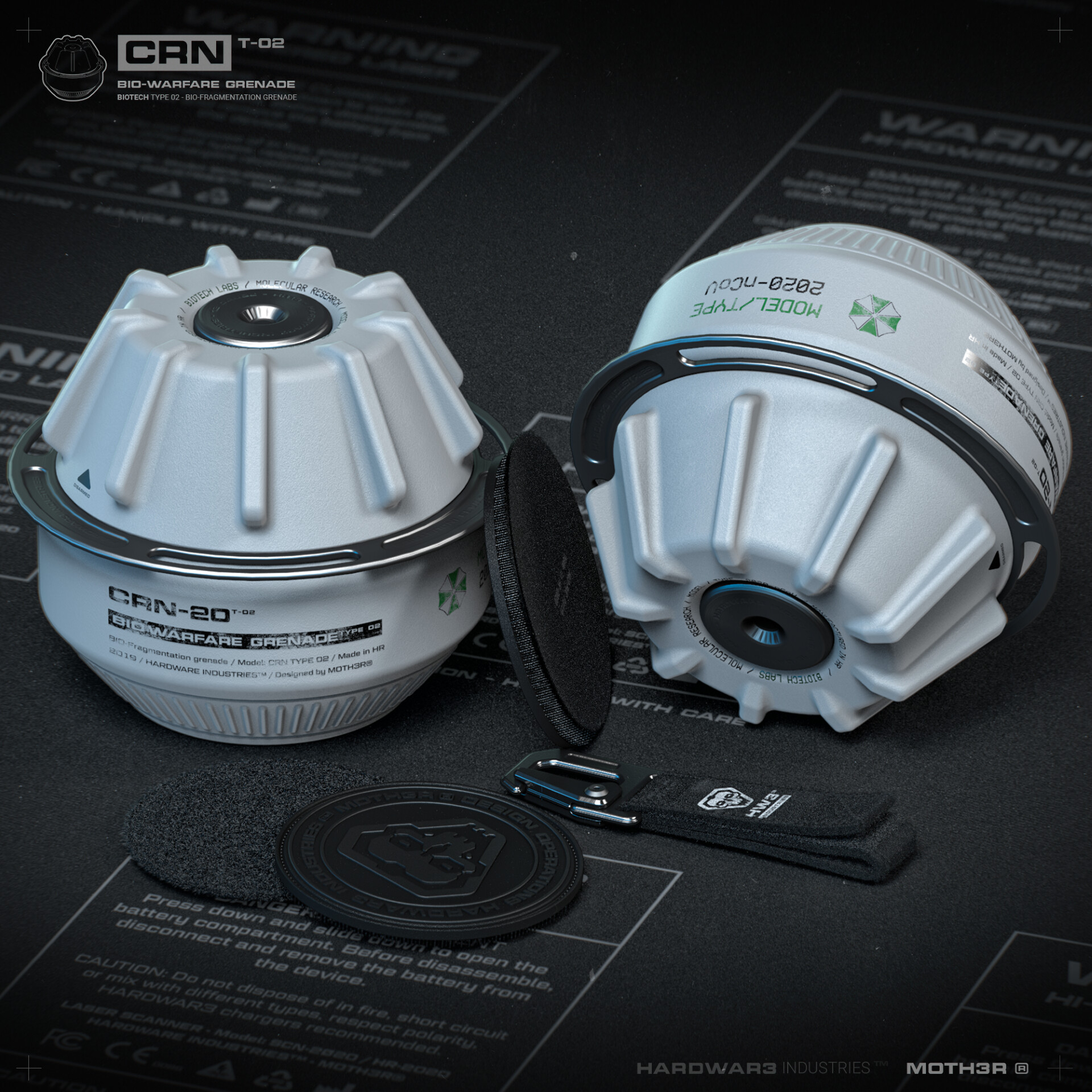Perfectly Imperfect

- Intent: To create a Gas grenade
- Image Source: [X]
- Canon Link: N/A
- Permissions: N/A
- Primary Source: [X]
- Manufacturer: N&Z Umbrella Corporation and Subsidiaries
- Affiliation: Closed Market
- Model: AGG-25
- Modularity: No
- Production: Mass Production
- Material:
- Ersteel 145 Casing
- Pressurized Noxinium A
- Electronic unlock mechanism & Timer
- Classification: Gas grenade
- Size: Average
- Weight: Average
- Explosive Type: Lock mechanism
- Delivery Method: Thrown or Launched
- Effective Range: Average
- Area Of Effect: Personal
- Stopping Power: Very High
- Electronical lock and timer, allows for a set time between 3 and 10 seconds before the grenade's latches open to disperse the pressurized gas within.
- Energy and heat resistant Ersteel 145 casing to avoid or at the very least minimize "accidental" explosions.
- Safe design: This grenade is designed to be carried either on a belt of in crates, allowing for easy transport of relatively large numbers of these grenades either by vehicle or by man, it is for this reason that it has been designed without any interior pieces for the mechanism and without any sort of actual detonator, to avoid accidents caused by negligence or misfortune.
- Extremely toxic gas: The gas within these grenades is Noxinium A, which has very far reaching effects after even minimal exposure, with effects on the lungs and bloodcirculation due to the heavy materials within, capable of causing fast asphixiation similar to drowning, clotting of blood within the circulatory system and ofcourse death.
- Bio-weapon: even though it is meant to be used as an anti personel weapon, it can be used in a secondary purpose as bio weapon, as it will undoubtedly contaminate the ground, suffocate plantlife and it takes a very long time for it to be broken down and removed within soil.
- Small dispersement range: Due to the heavy nature of the gas, it will drop down faster, as it is heavier than regular air, thus both limiting the range and the time in which it remains airborn.
- Explosive: This gas, even when kept within the grenades needs to be kept in cold storage or at the very least be avoided from long term heatsources, as even though the grenade uses Ersteel 145 to mitigate the ambient temperature, it can still heat up when held near a heatsource, which after 'prolonged' contact may lead to a violent explosion.
During the creation of the company's newest range of reactors, the Noxinium A gas had been discovered as a residu substance or byproduct from said reactors. As a company mainly focused on military technology, N&Z Umbrella Corporation decided to explore the use of this byproduct, which resulted in the understanding that it was both a heavy and extremely toxic gas which worked on the respitory and blood circulation system. This ofcourse gave rise to the idea of compressing said Noxinium A gas for storage within small containers to create a useful and rather dreadful weapon for future battlefields.
The grenade which the designers and engineers came up with, was dubbed the AGG-25, with AGG standing for Automated Gas Grenade and the 25 standing for the 25cc of Liquid, compressed Noxinium A gas within each grenade. The AGG-25 is called as such because it sports a sleek design with an automated locking mechnism, which when activated will unlock the latches on the ersteel casing within a set time between 3 and 10 seconds to allow the internal volume of gas to expand and be dispersed automatically into a cloud of around 2.5m on 2.5m. Though this is not an absolute figure, it has been seen as the average size the cloud could reach depending on the kind of atmospheric pressure and aerial composition. However, due to the gas' heavy nature, in most cases, it's dispersement would be quickly hampered and the cloud would sink down to the ground rather rapidly.
Extra tests did yield results regarding the aftereffects of the gas, noting that even when the gas has sunken into the soil, its particles poison the groundwater, suffocate any plantlie within range and it takes an estimated sixx months before even the last particles have been neutralised within soil by natural means.







